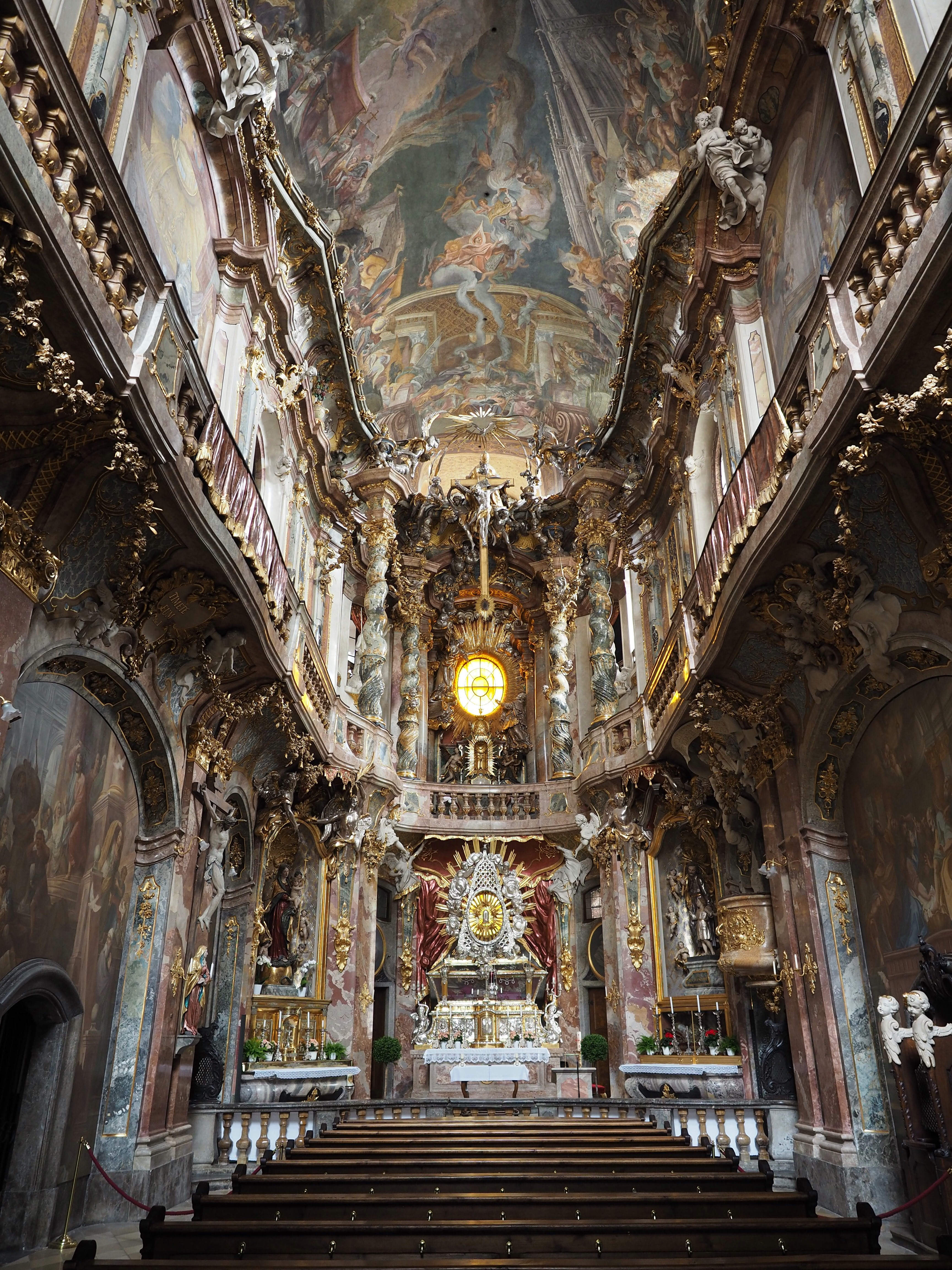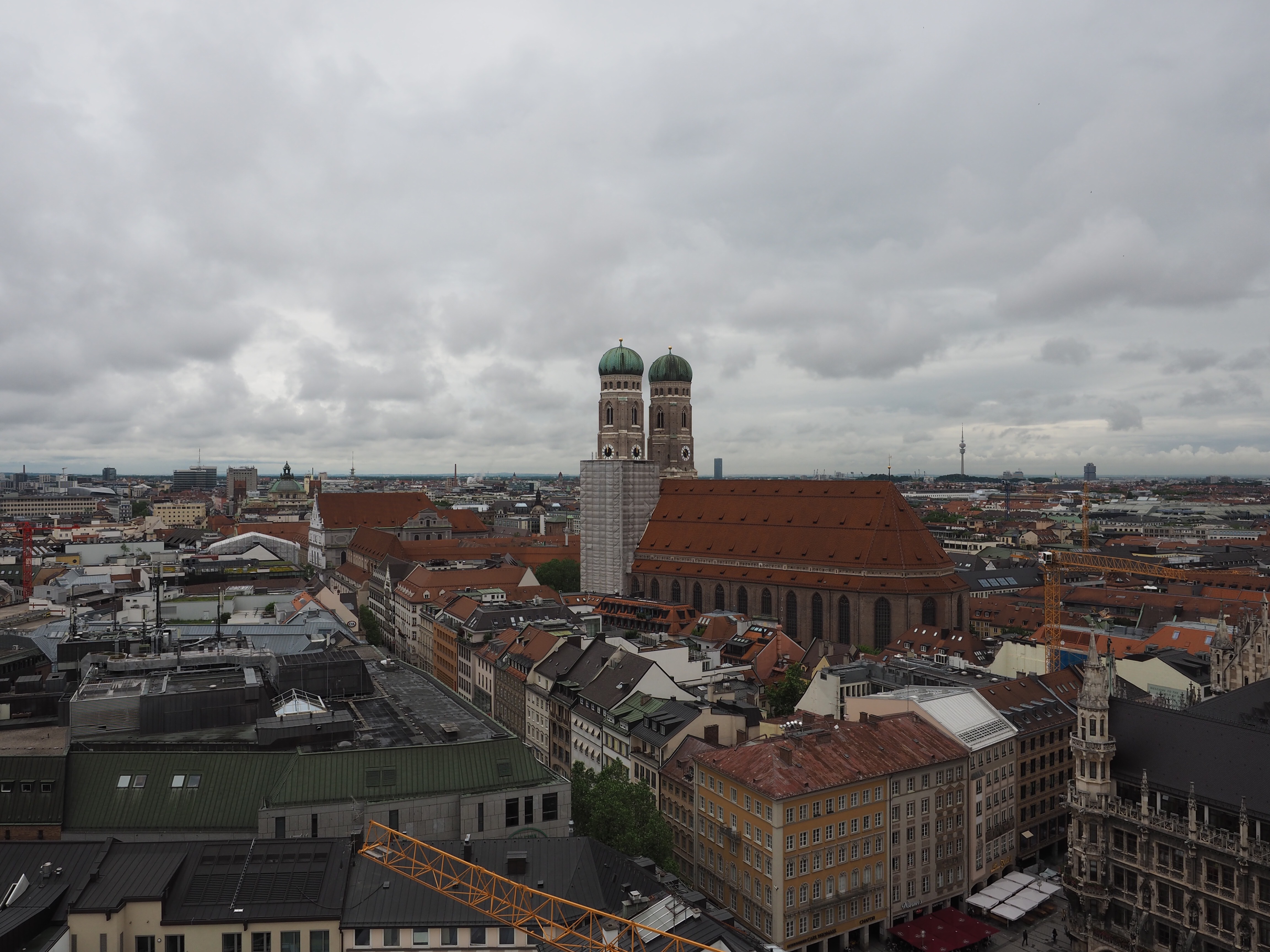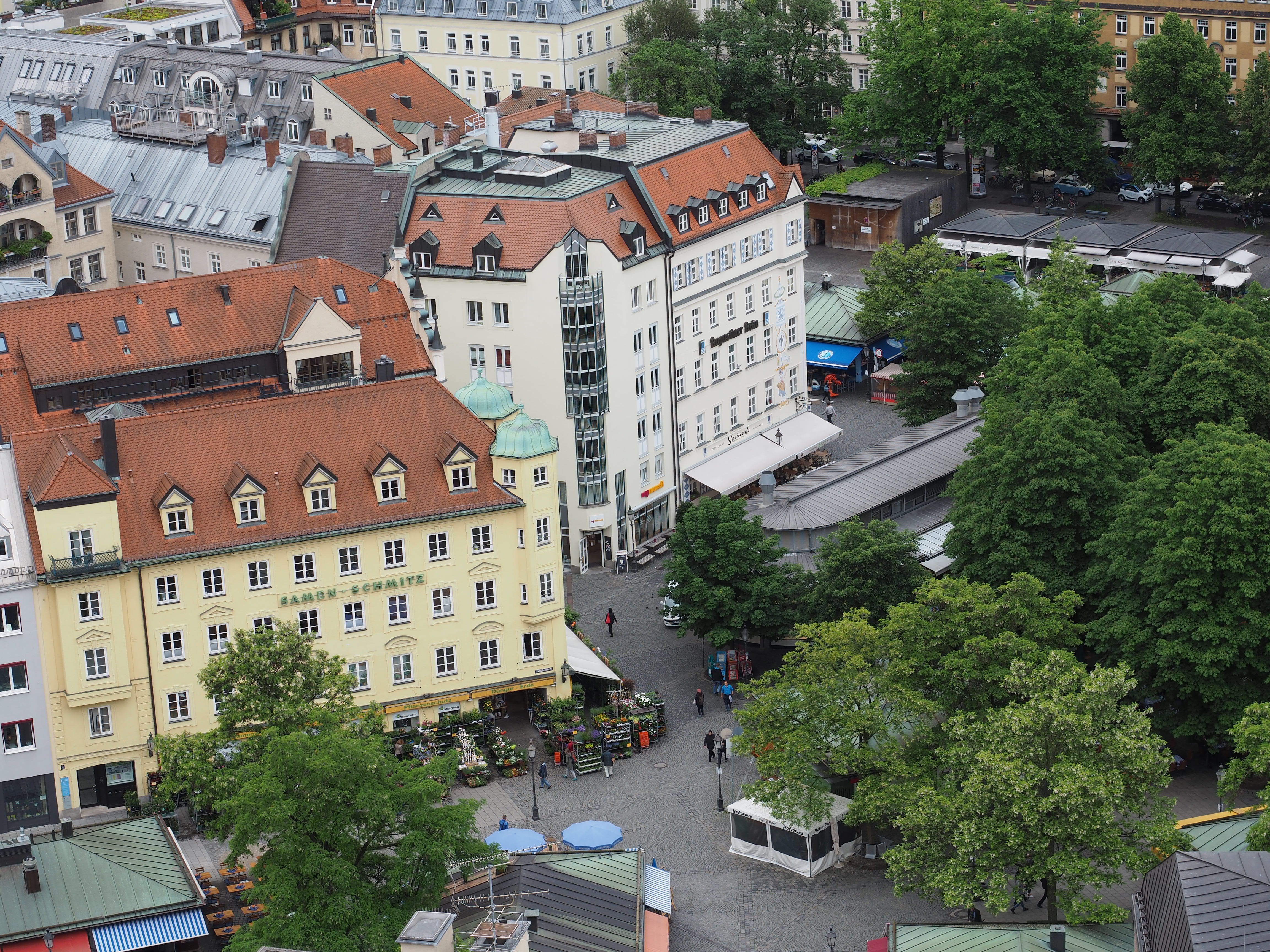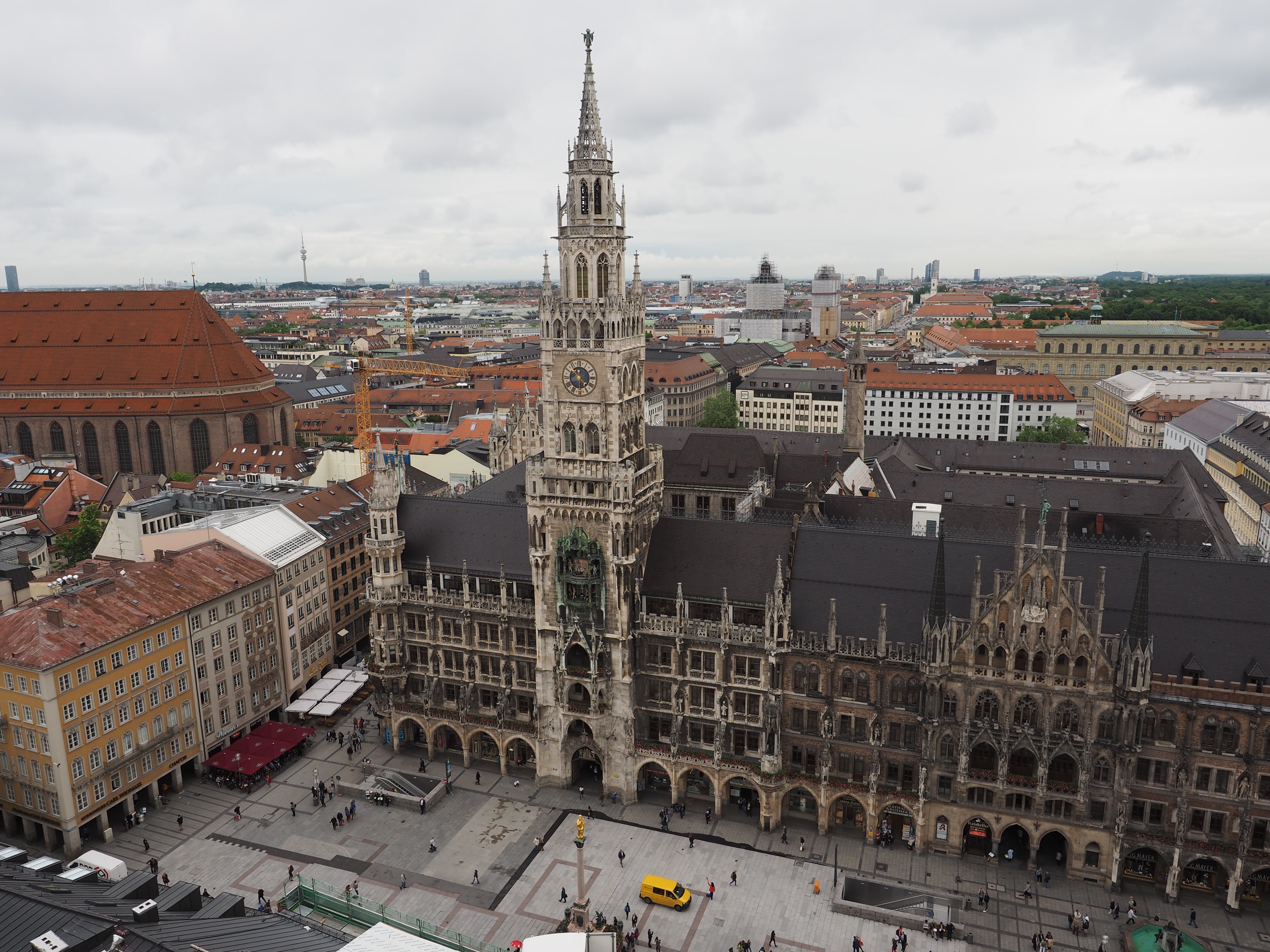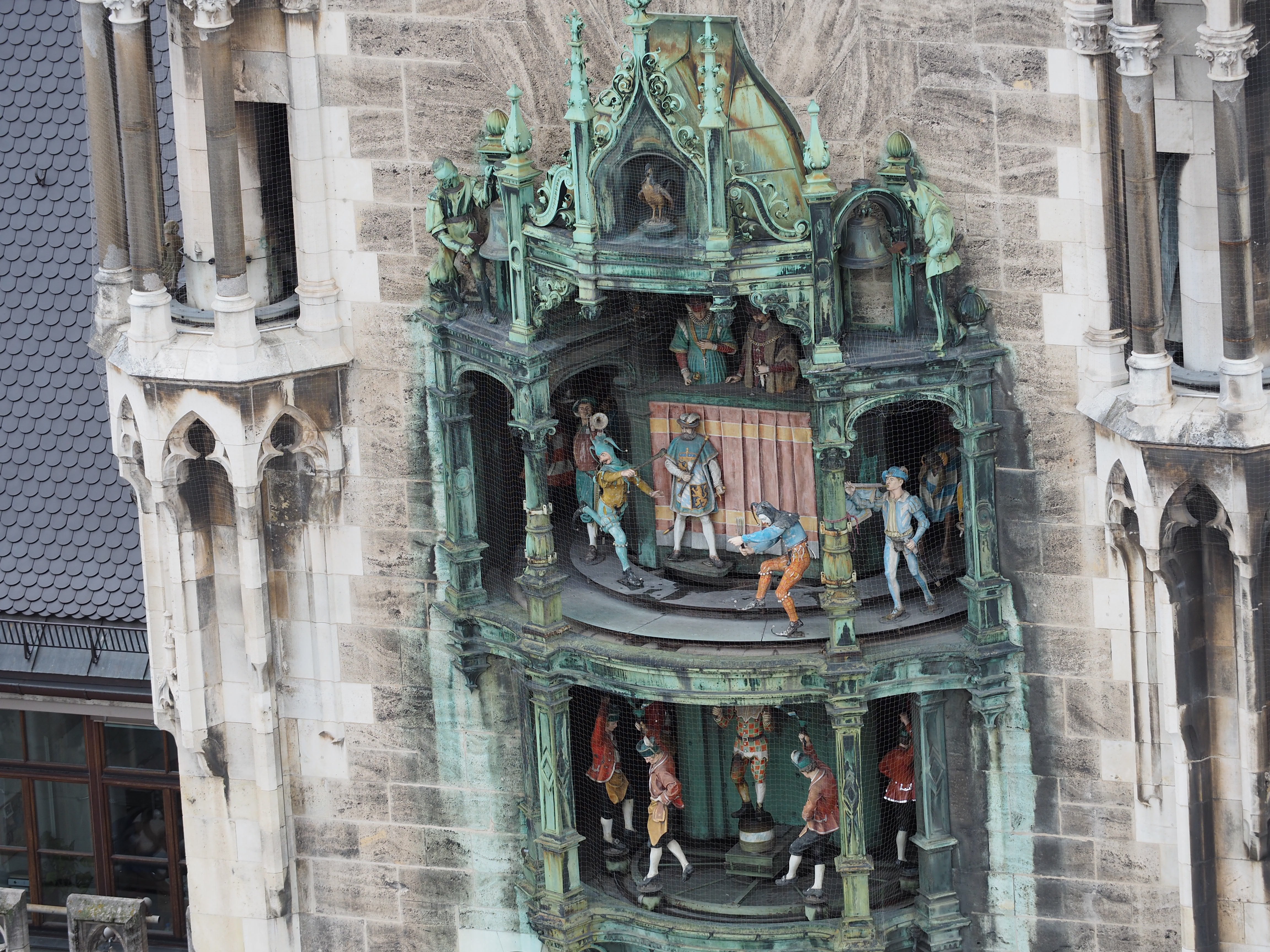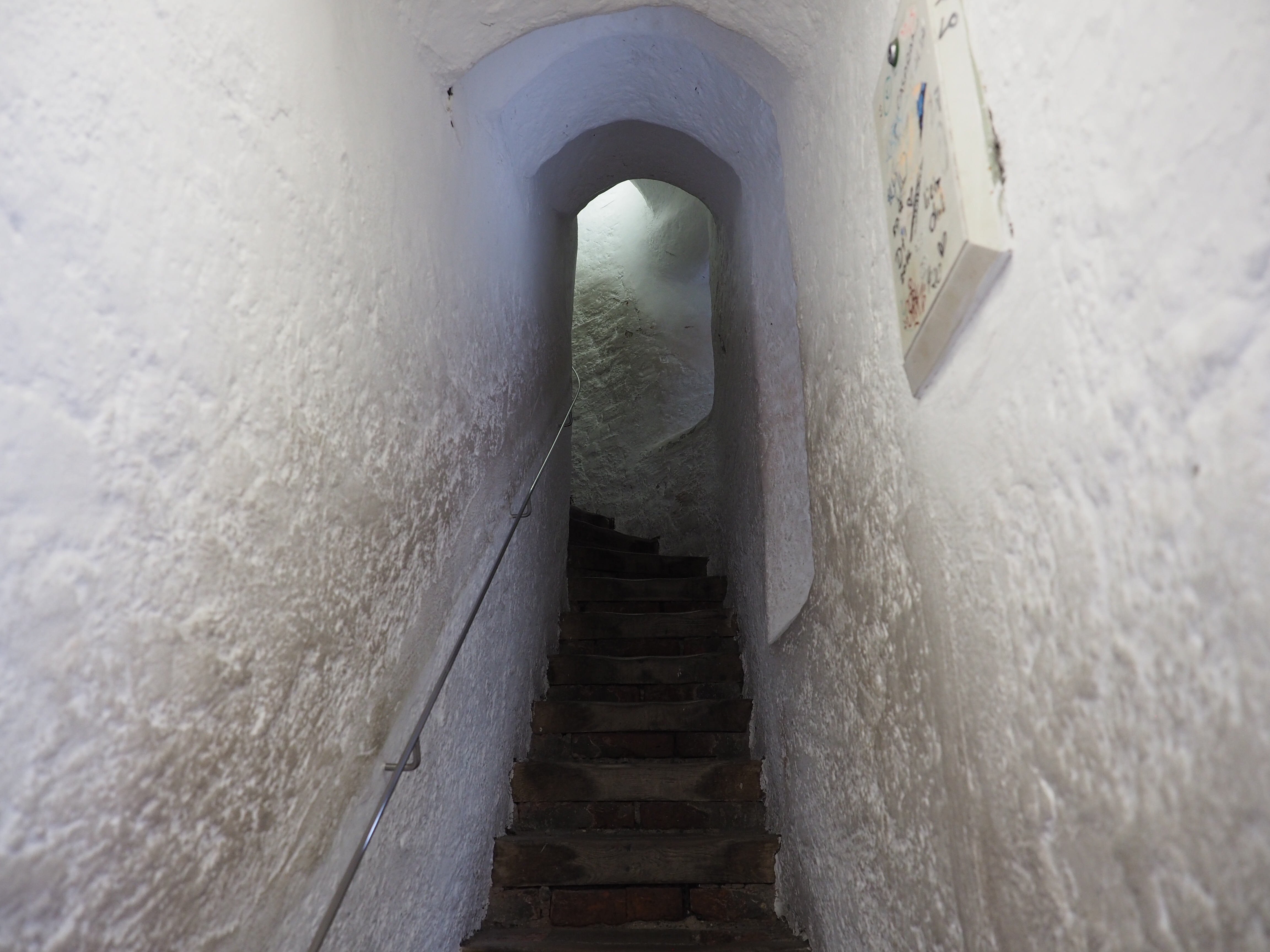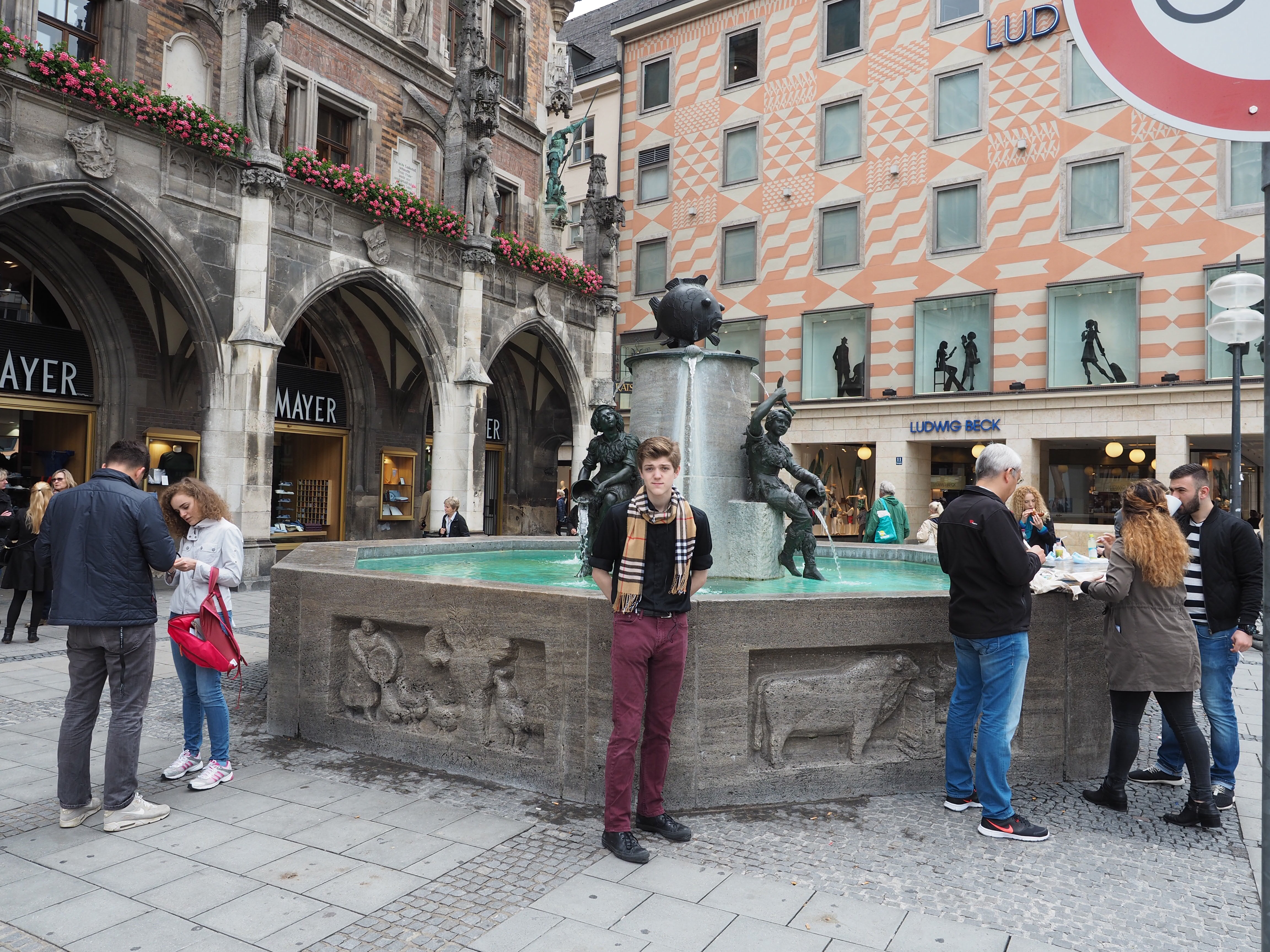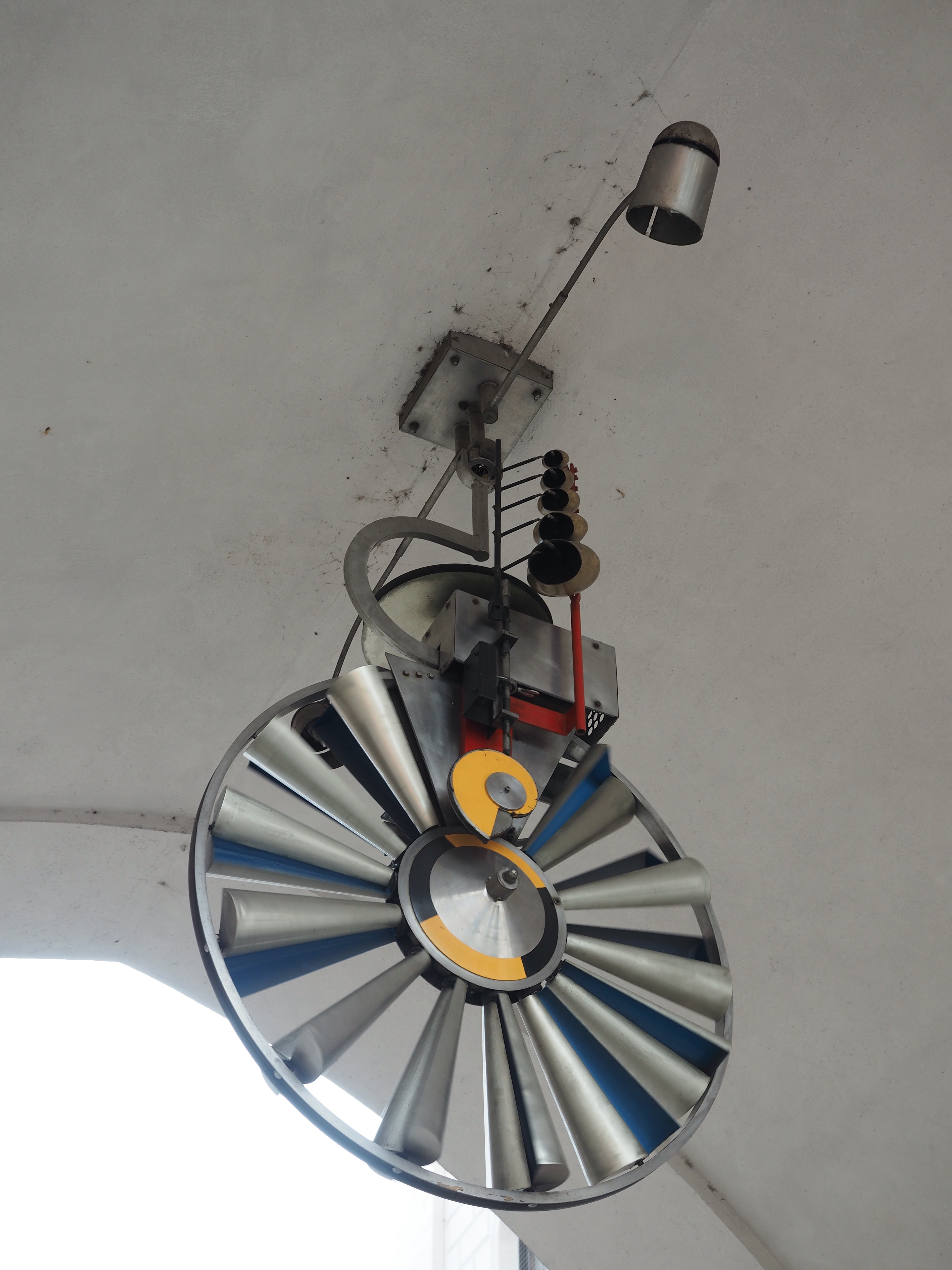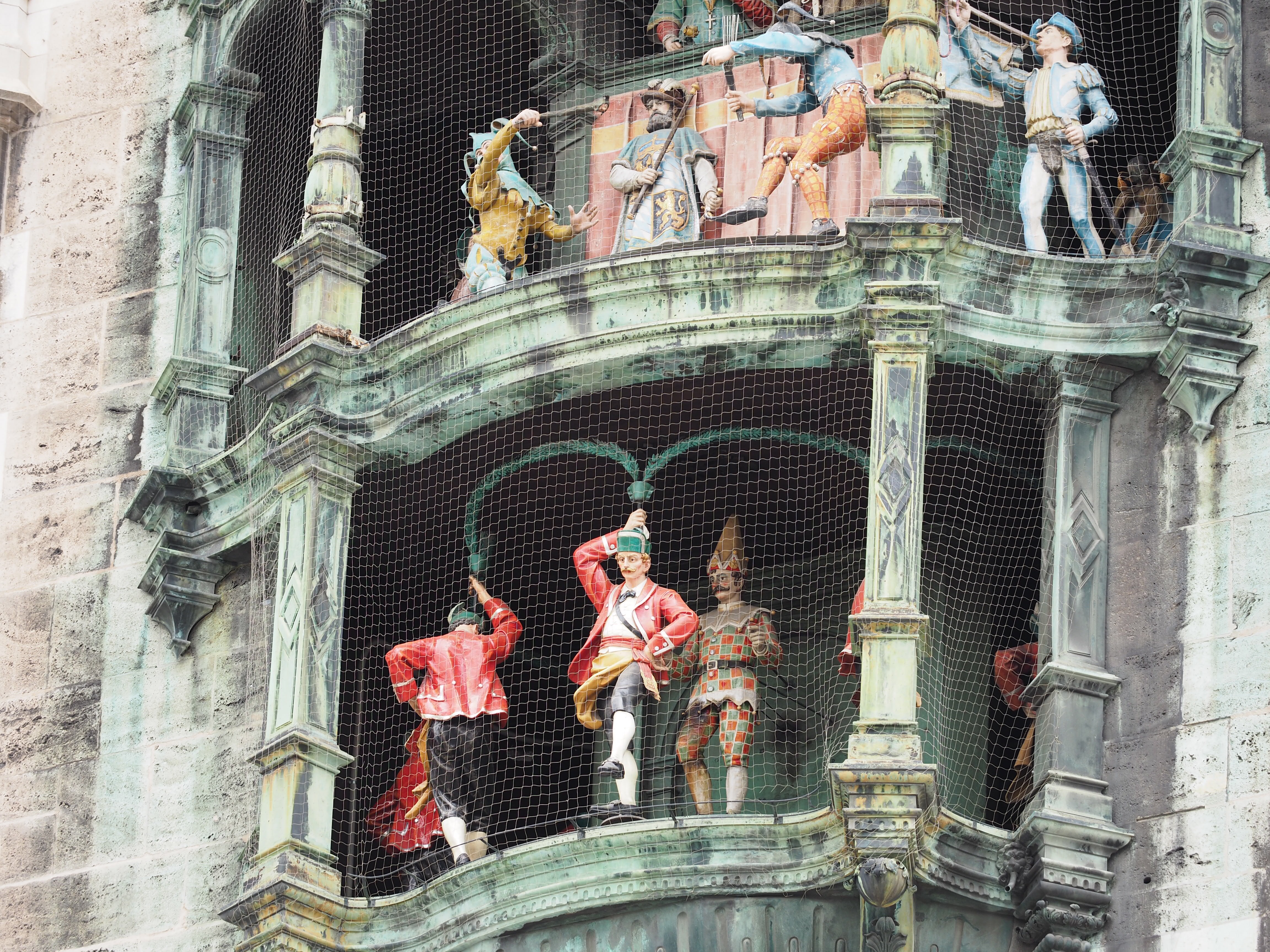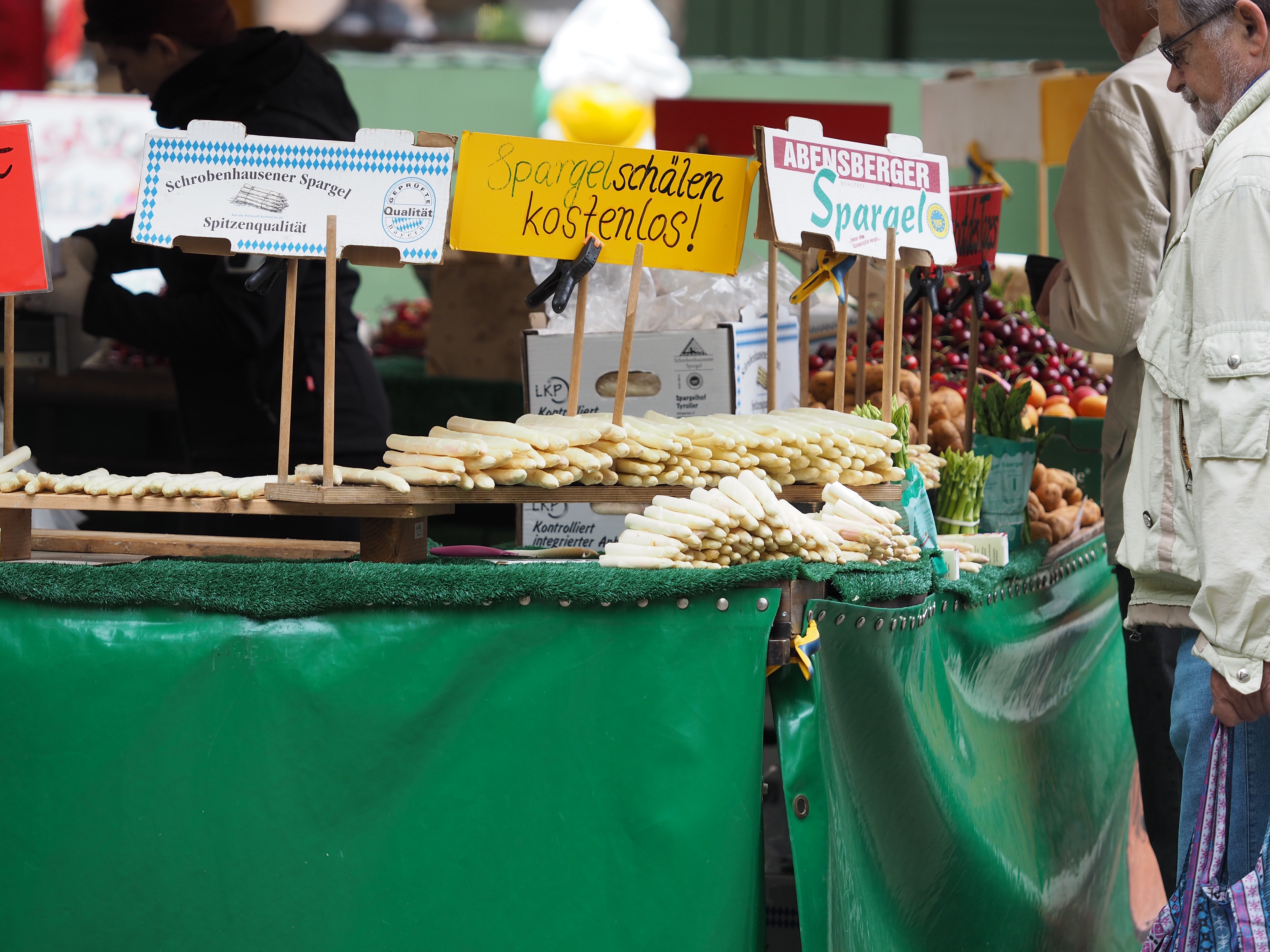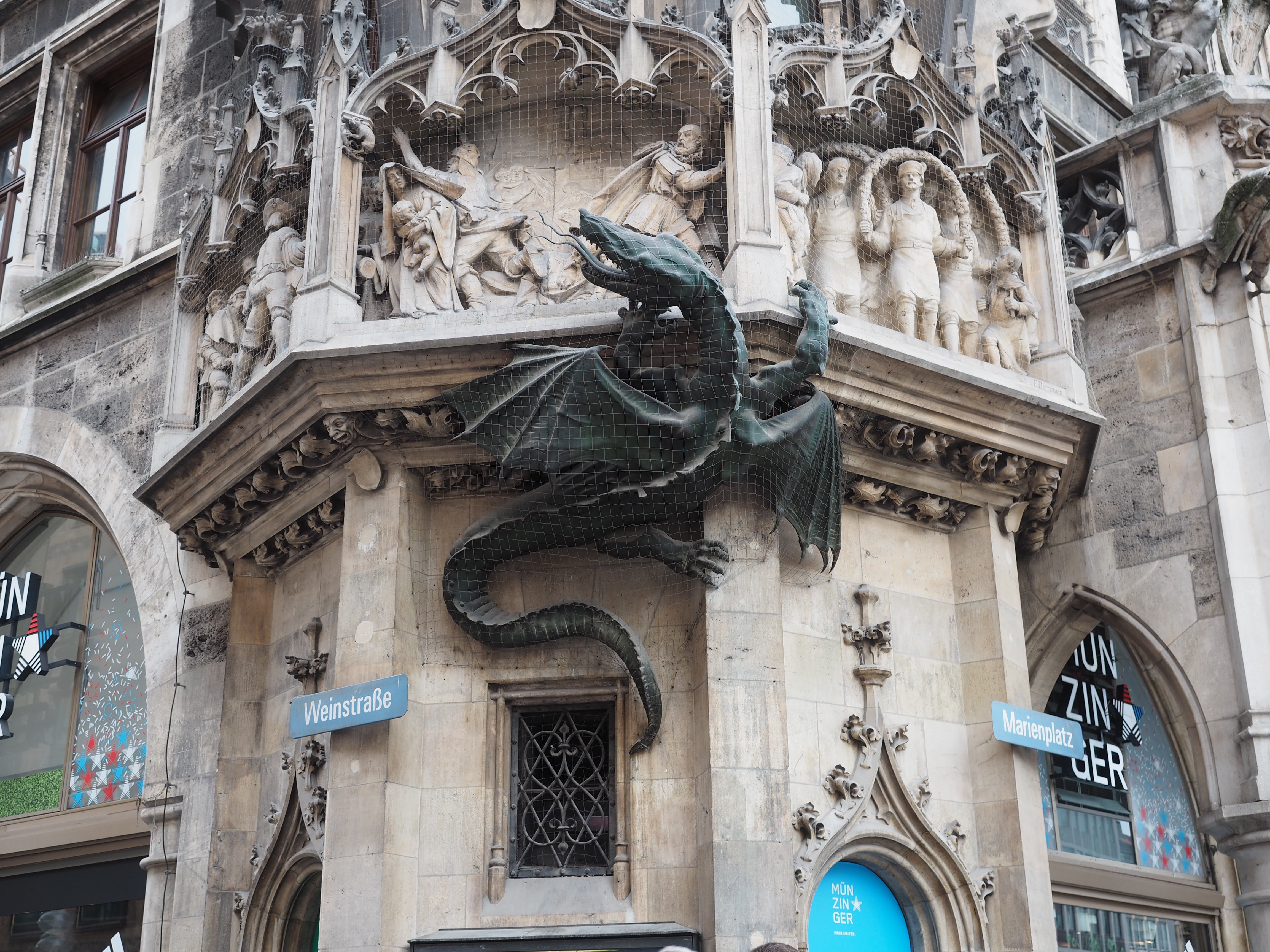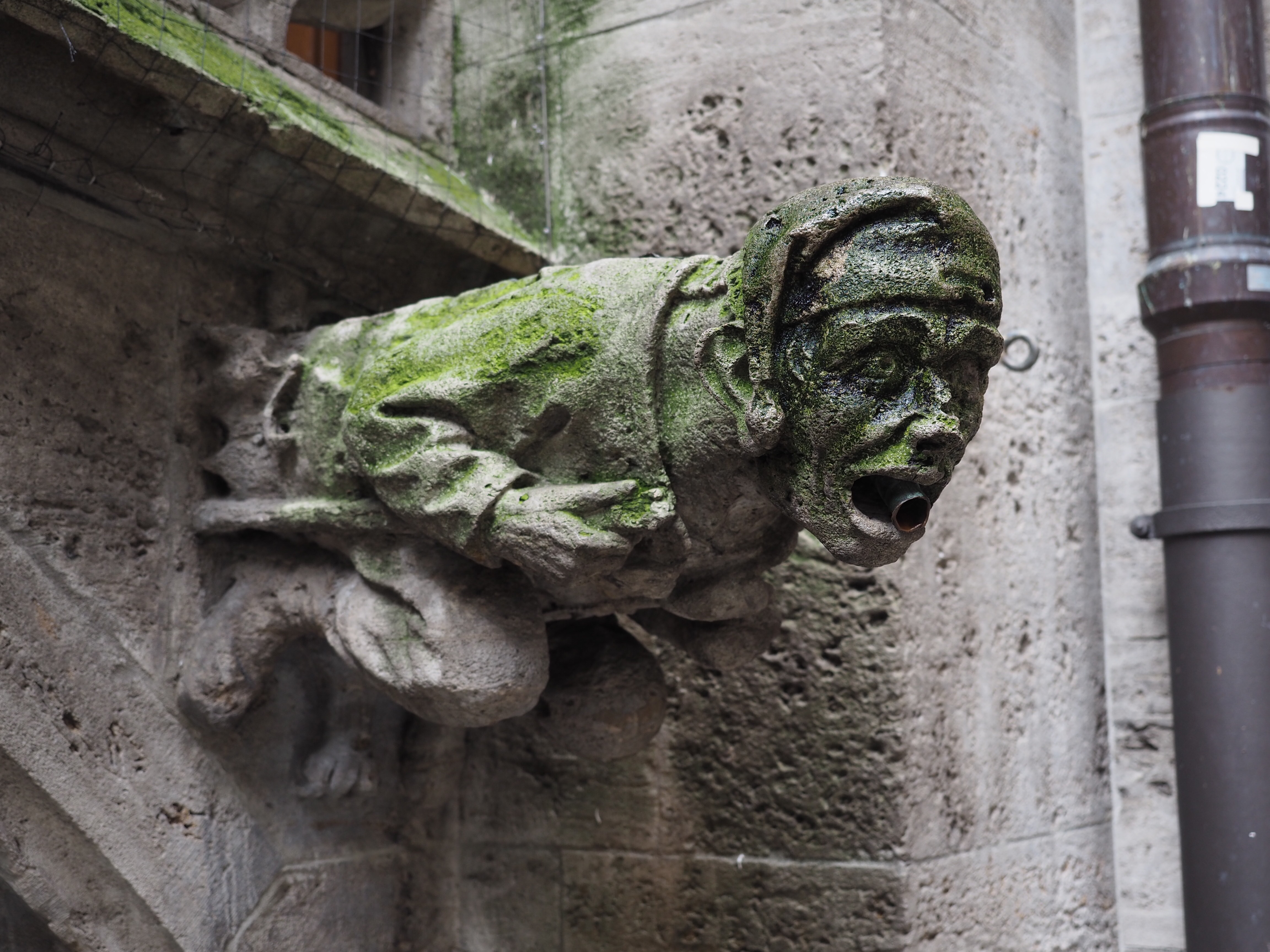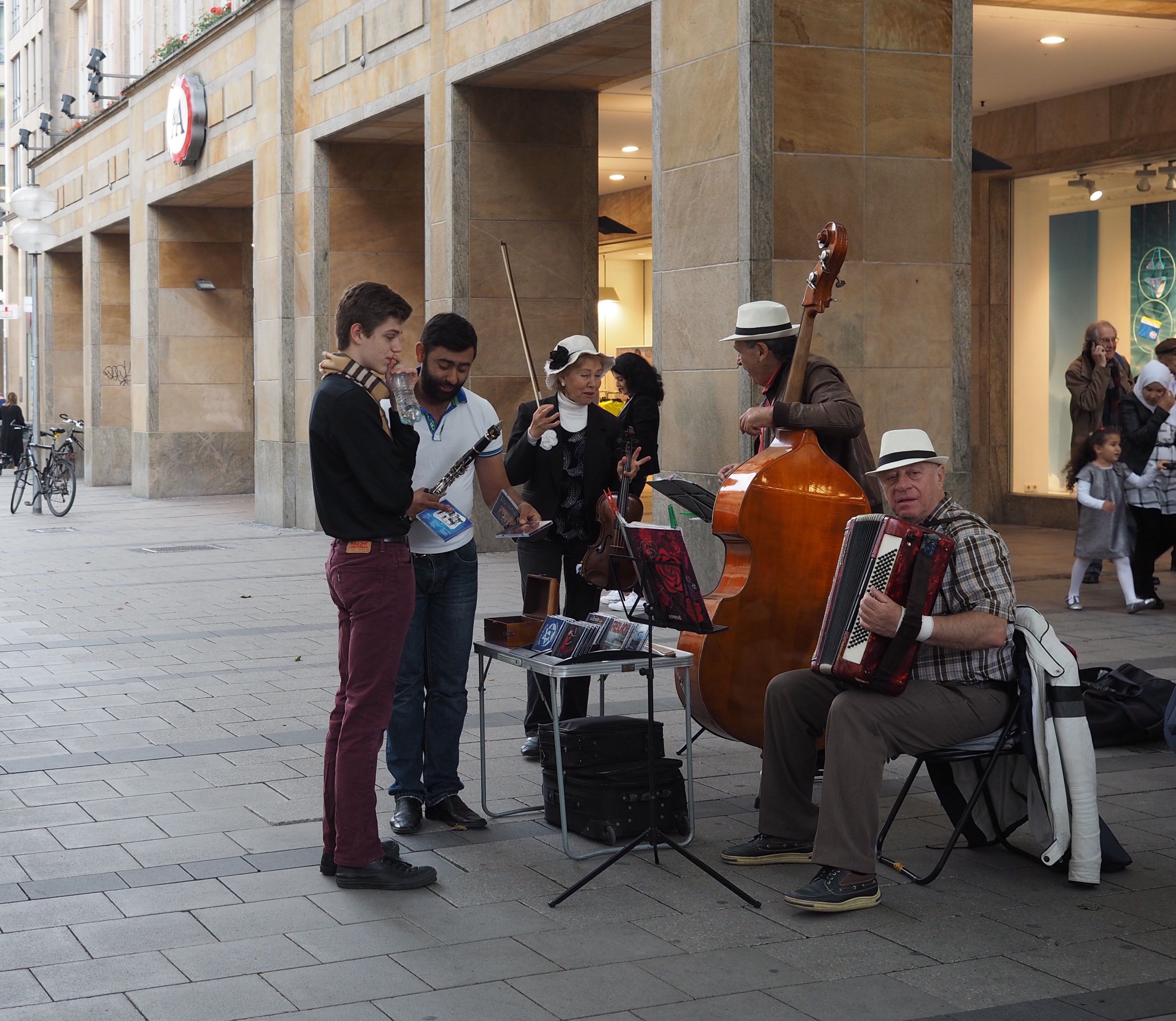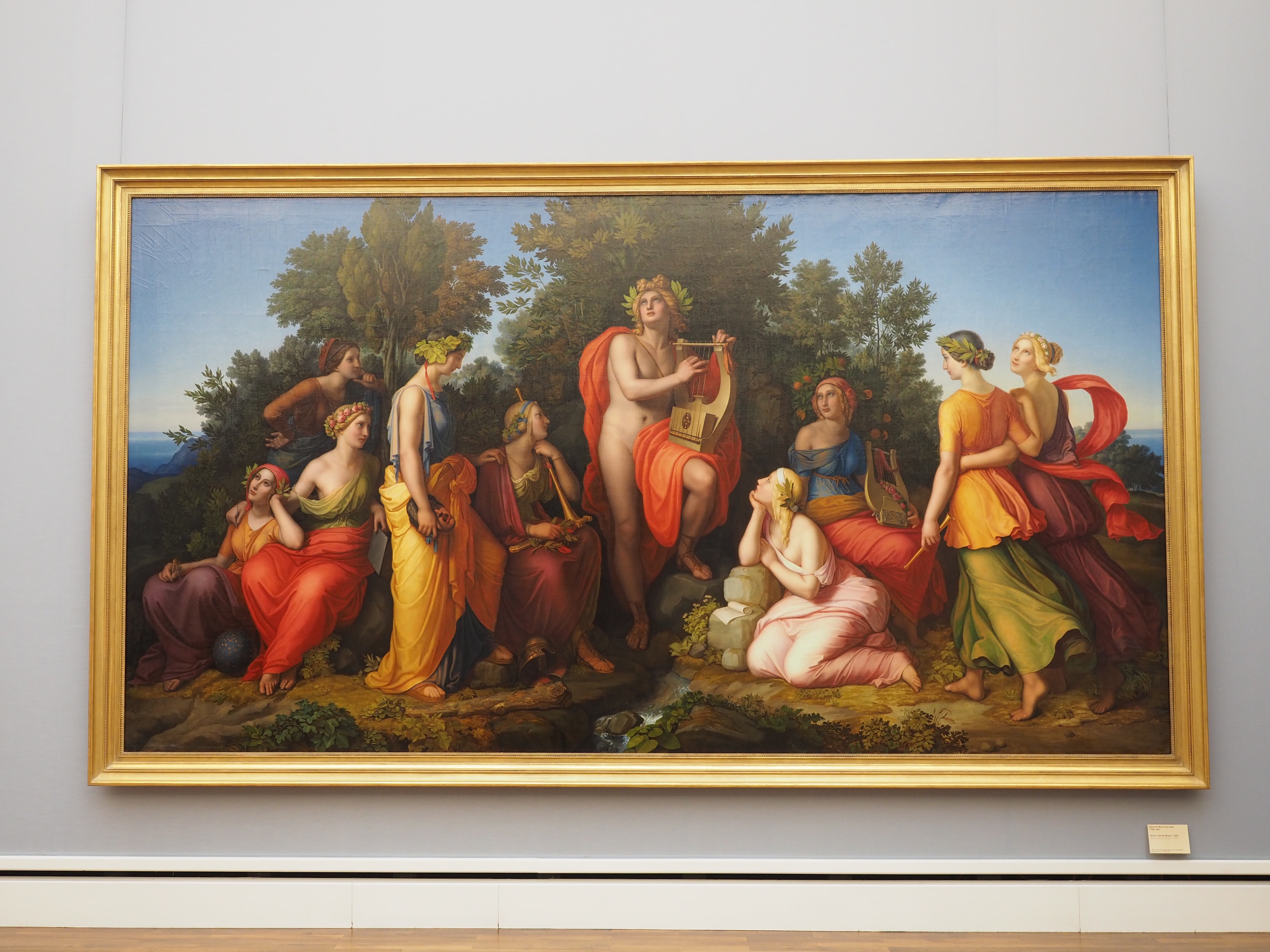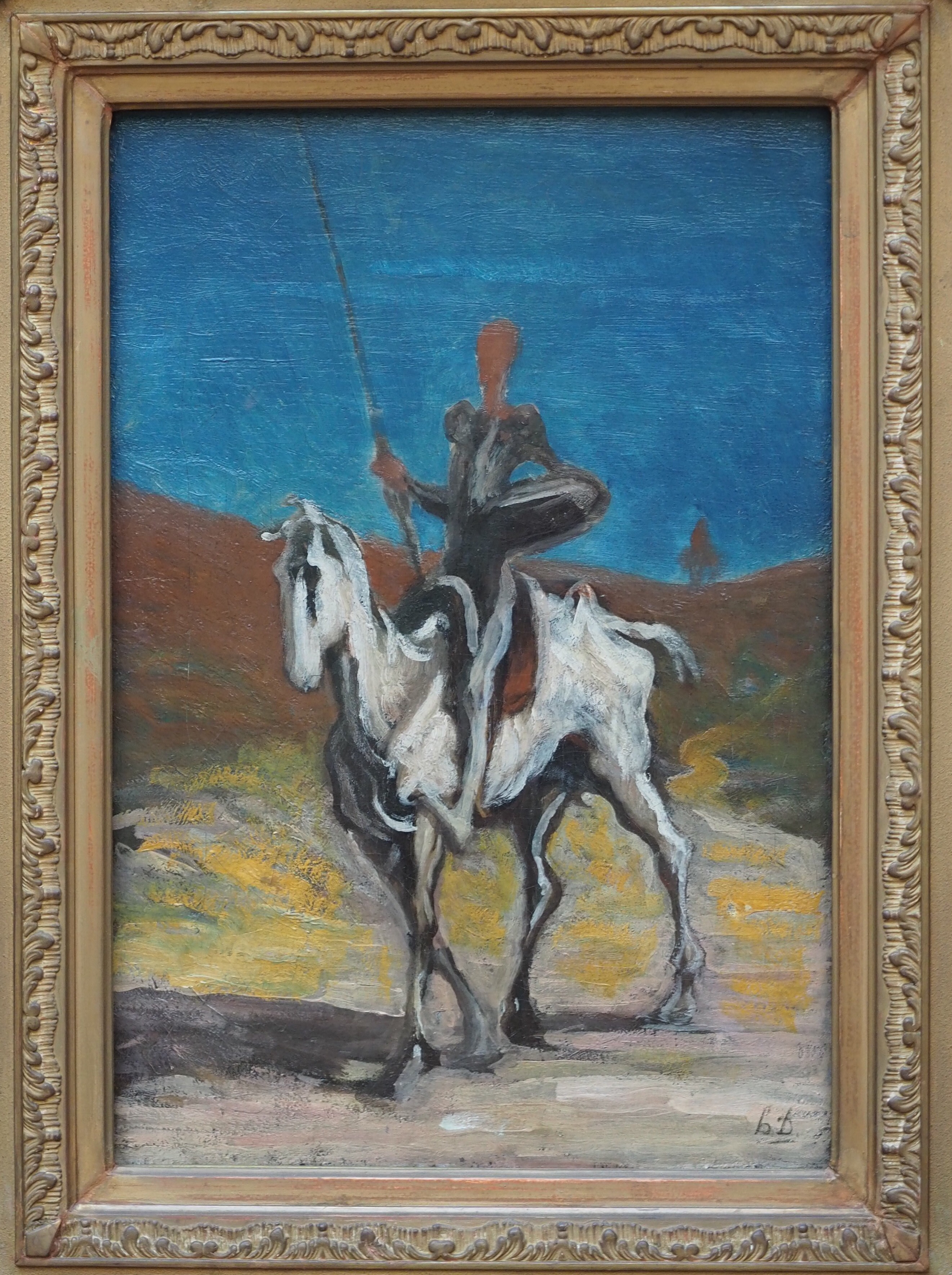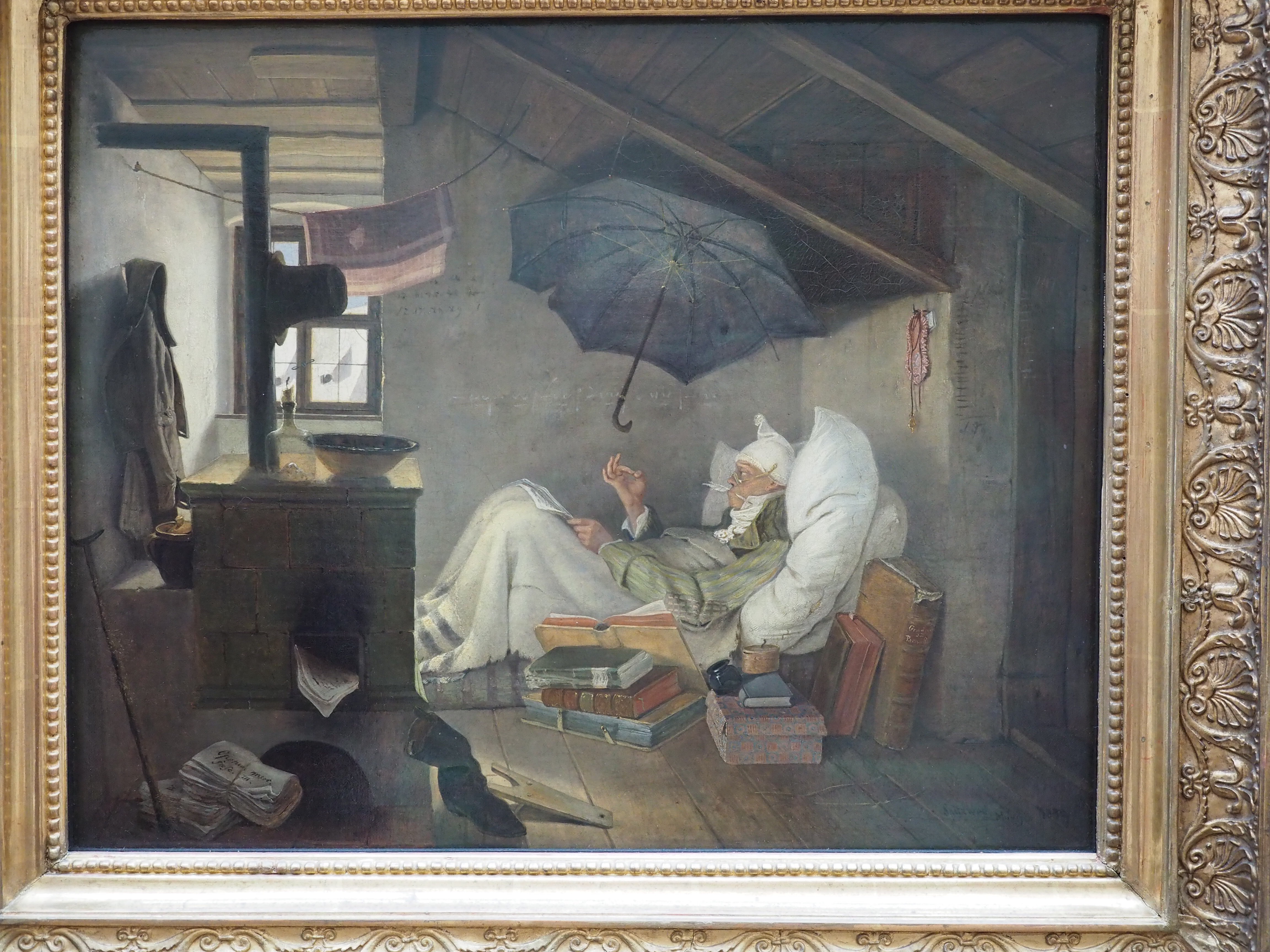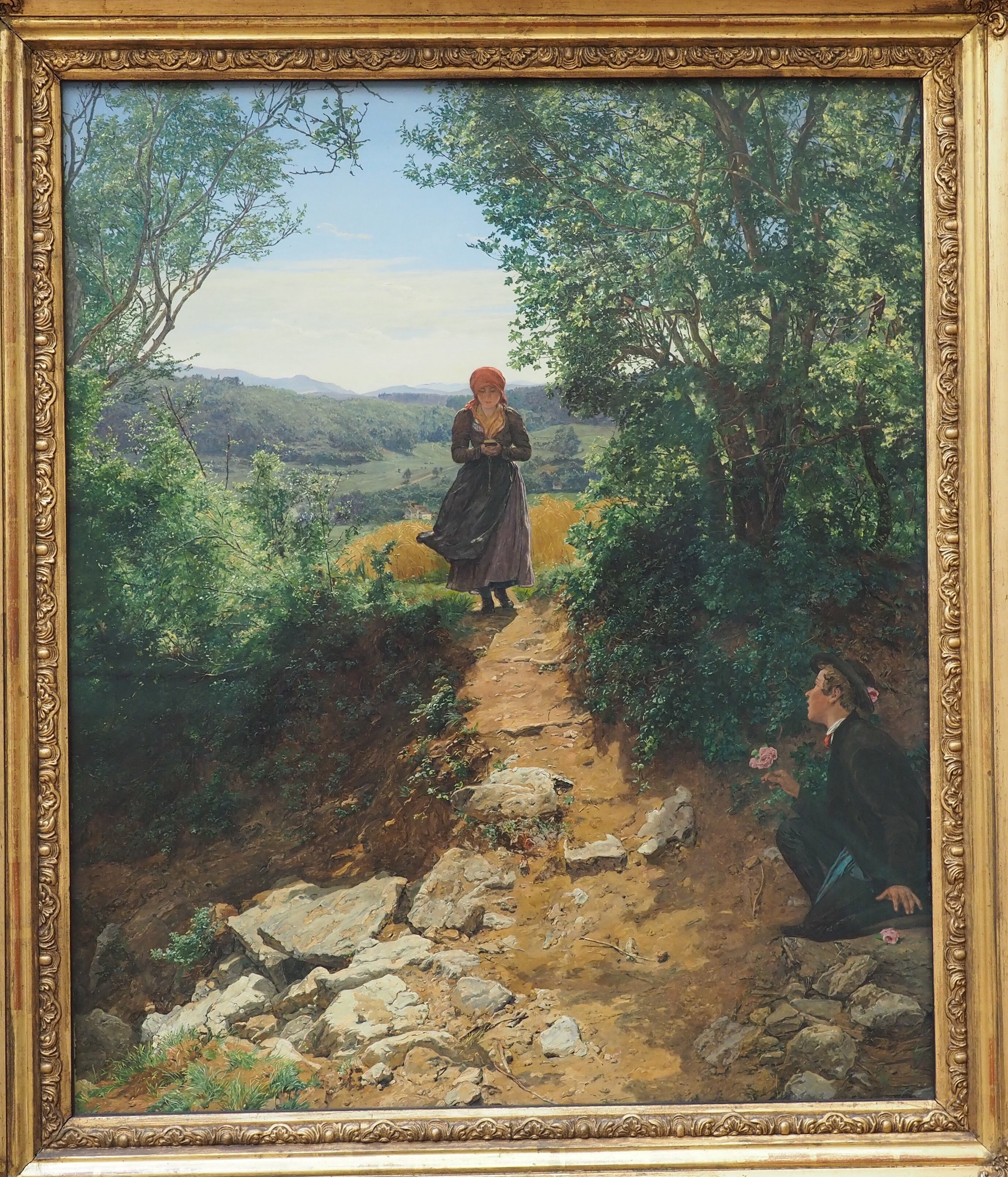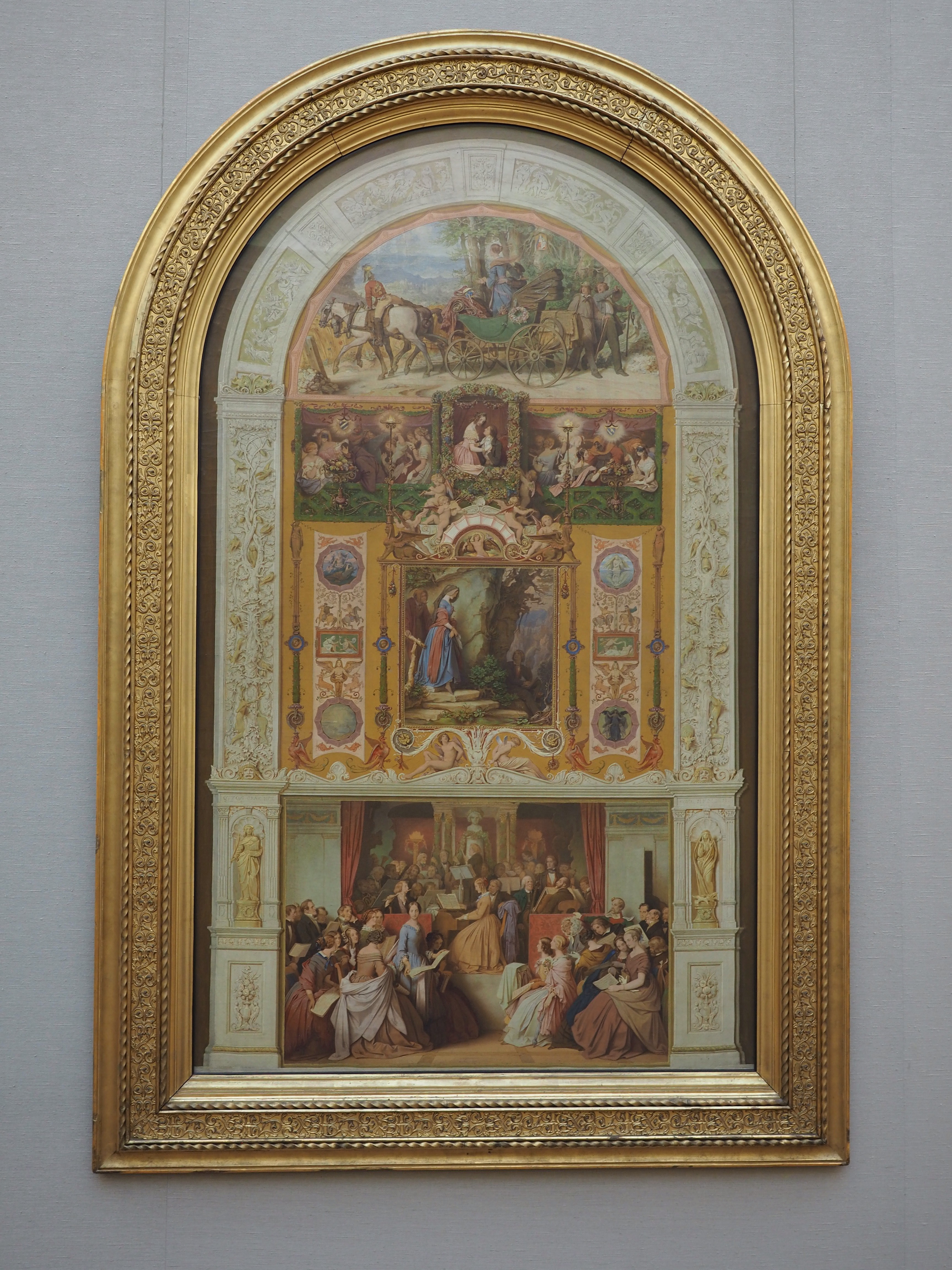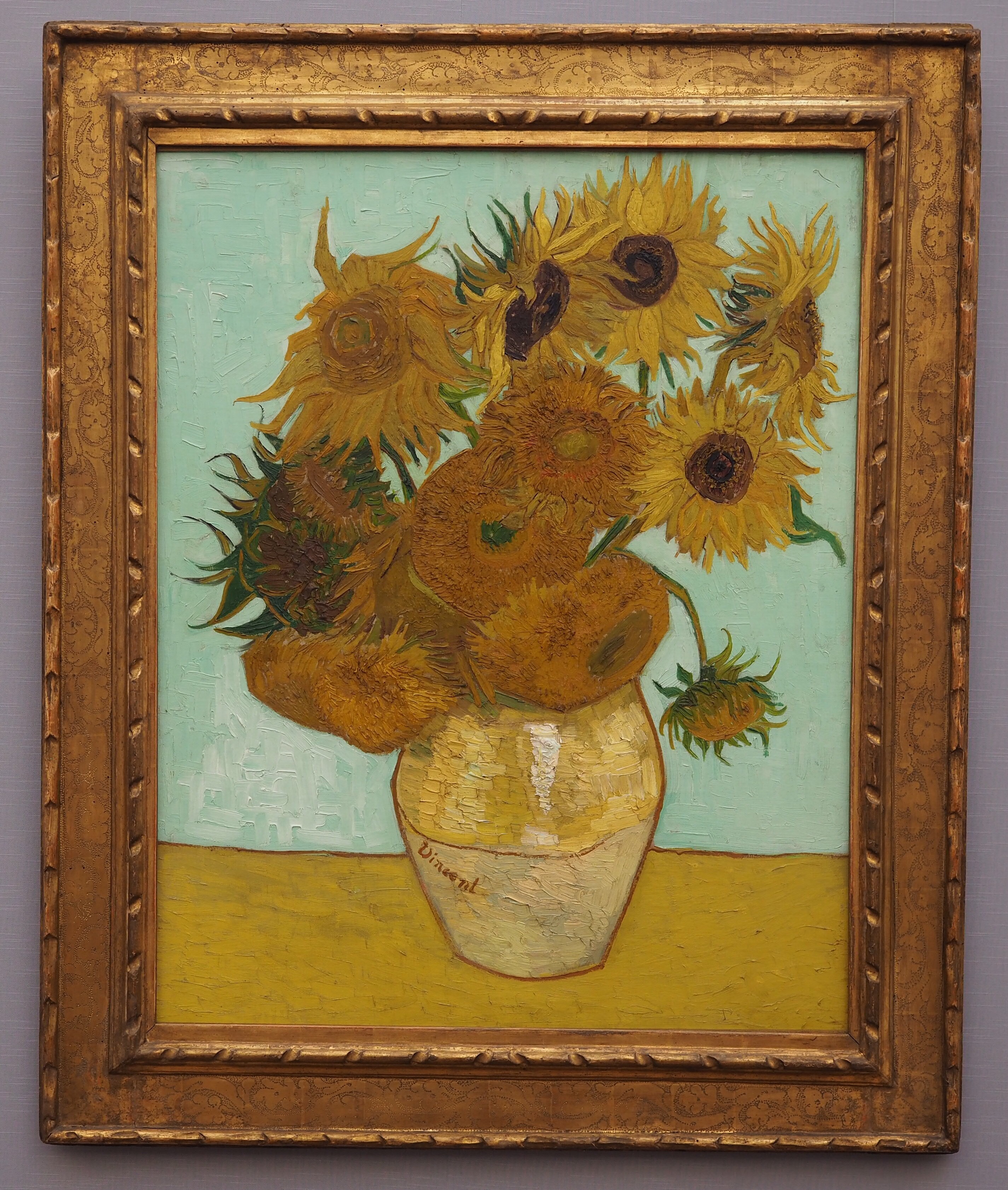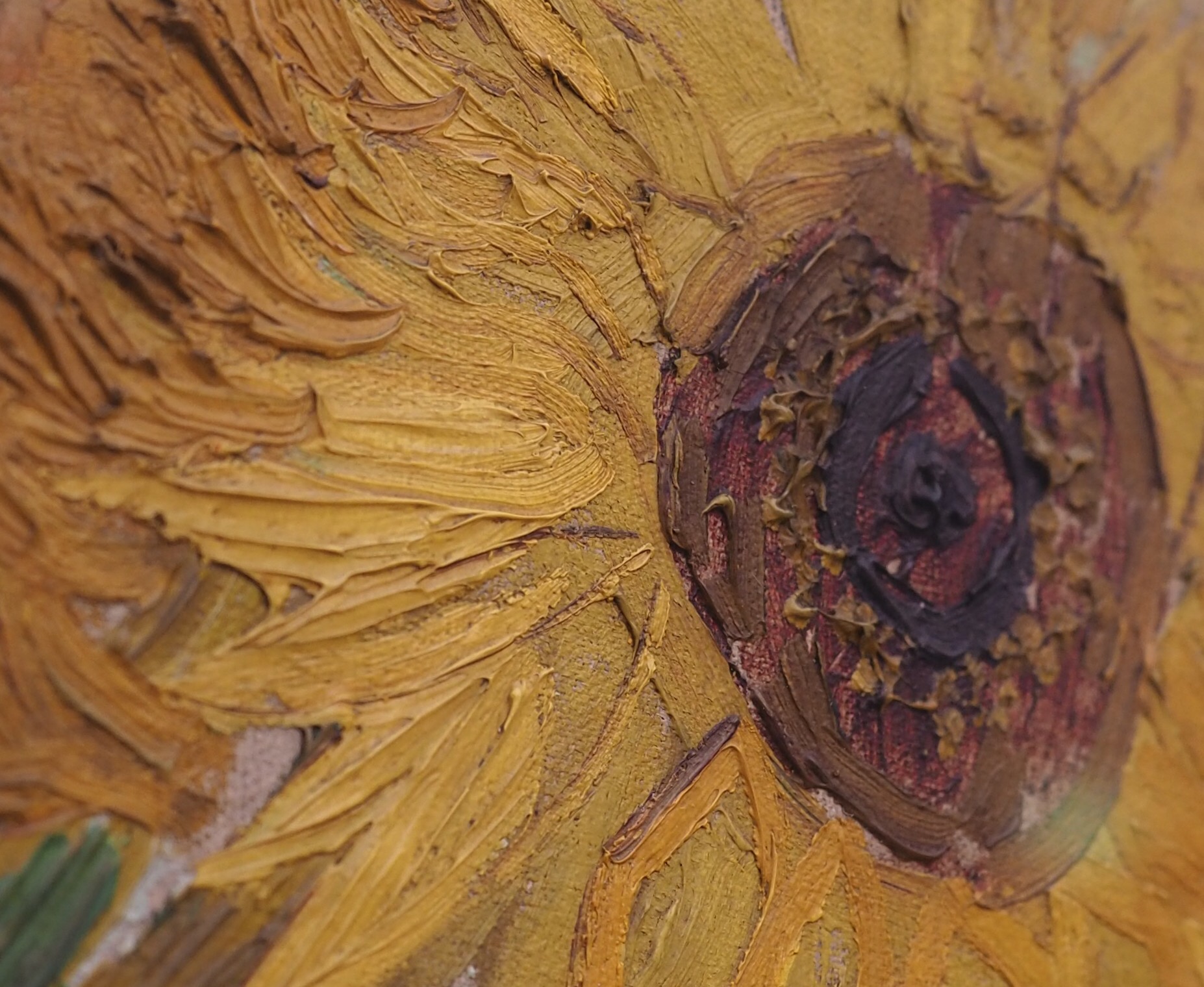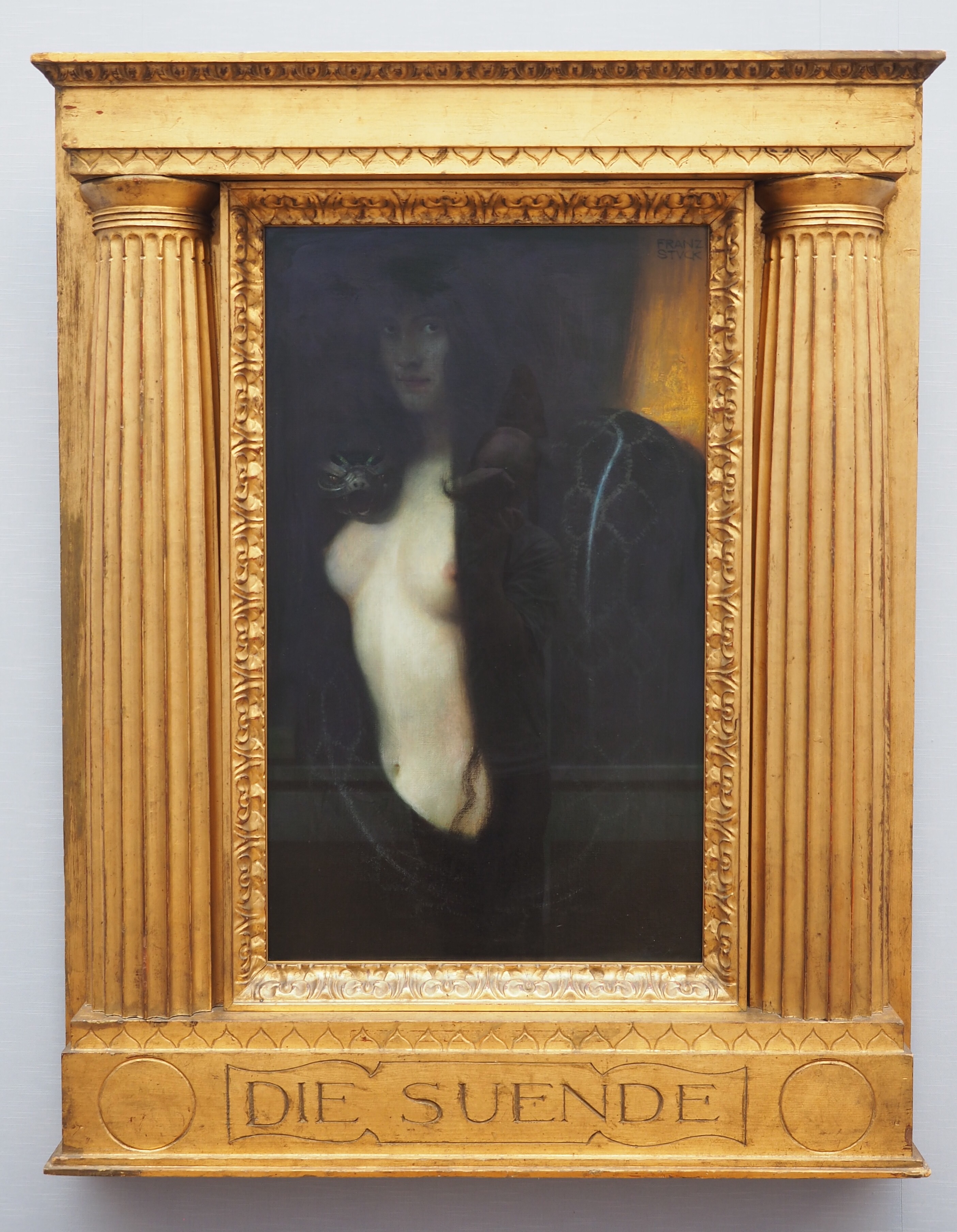Asamkirche
View of the Frauenkirche from St Peter’s tower
Town Houses with Viktualienmarkt from St Peter’s towerTown Houses with Viktualienmarkt from St Peter’s tower
New Town Hall (Neues Rathaus) with its Glockenspiel from St Peter’s tower
GlockenspielGlockenspiel
Staircase up St. Peter’s
Kai talking to Klesmer street musicians
Spielzeugmuseum wind-powered music machineSpielzeugmuseum wind-powered music machine
Glockenspiel
Asparagus at the Viktualienmarkt
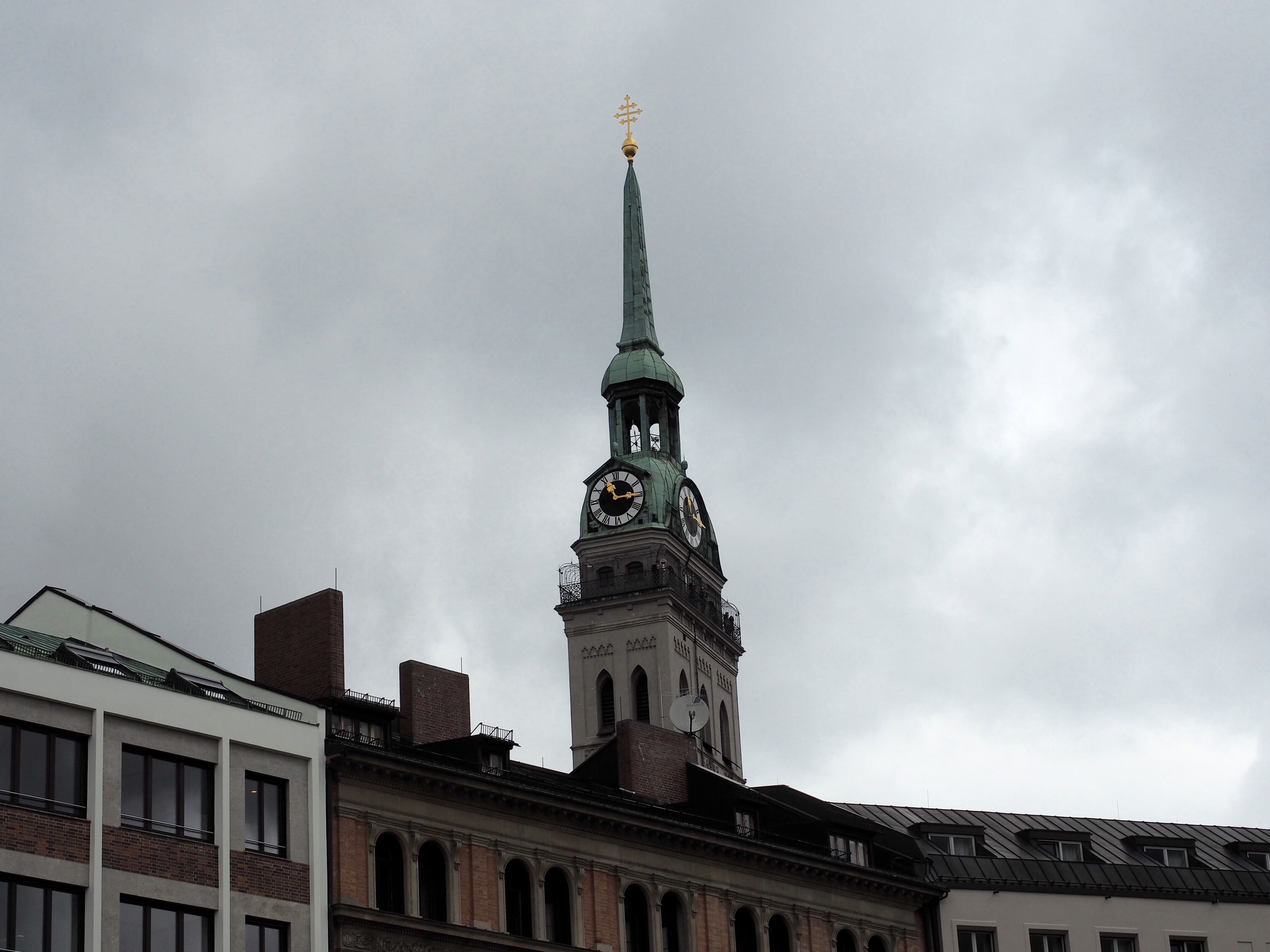
St Peter’s Tower from below
Dragon Caught at New Town Hall
Gargoyle at New Town Hall
Kai talking to Klesmer street musicians
Apollo and the Muses
Daumier Don Quixote
Spitzweg, Der arme Poet Ferdinand Georg Waldmuller, Die Erwartete, 1860
Moritz Von Schwind, Symphonie
Van Gogh, Sun Flowers
Van Gogh, Sun Flowers, detail
Die Suende (Sin)
We got up fairly early on our first full day in Munich and were excited that the weather forecast had changed from rain all day to rain only in the afternoon. We got fresh rolls, had breakfast, and took off at about 9:30 am to go downtown. Imke and I have been to Munich multiple times, so we were able to give Mark and Kai, the newbies, a pretty good tour of the downtown area. We took the subway to Sendlinger Tor and walked towards the famous, tourist-studded Marienplatz. On the way, we stopped at the Asam Church, the“hidden church”–the width and height of a town house in a long row of four-story apartments, but a huge explosion of baroque detail inside. Then we walked on to the Marienplatz, where the “New Town Hall” dominates the market square, and climbed up the tower of the nearby church of St. Peter, which gives a nice view of all of Munich from above. We could see the famous symbol of Munich, the double towers of the Church of Our Lady (Frauenkirche), and the main city park (Englischer Garten), which will be a hike for another day. We climbed back down (with only minimal huffing and puffing) and waited for the Glockenspiel at Town Hall to do its little dance at 11 am, alongside a few hundred other tourists. We walked across the open market that happens near here every day, the Viktualienmarkt with its hallmark permanent stalls and its Bavarian specialties, and then through the Frauenkirche and the pedestrian shopping area around it, where we also heard our first street musicians–a band with four people playing Klesmer music. Kai has been so hungry for live music! He was very impressed by the clarinetist.
It was a little past noon by then and, as forecast, started to rain, so we ducked into the food courts at the subway station at the Karlstor, and had some very yummy Italian pasta & gnocchi out of to-go boxes. Good street food is the best! The afternoon was gray enough that we decided to go spend a couple of hours in one of the many art museums near downtown in the so-called museum district. We picked the Neue Pinakothek, which covers a pretty impressive and representative sample of late 18th to late 19th century European paintings.
Art History Geek Alert: If I don’t write this down, I will not remember it! Skip to the images if you just want highlights without my notes on paintings! I have to be honest and say that a lot of it is a bit boring to me, since the constant stream of Italian and Greek landscapes by artists from all over start to look the same after a while, and there’s a lot of that until the last four of five rooms. And for some of my favorite earlier painters, the works they have are not the best or most representative. There is ONE beautiful William Turner, a Reynolds portrait, and two paintings by Angelica Kauffmann, and for later, there is the famous “Don Quixote” painting by Daumier, which I do like. Kai and I had a good time trying to figure out which muse was which on a giant painting of “Apollo and the Muses” (Heinrich Maria Hess), and there were several other big “guess the myth” paintings we liked, plus a very elaborate, almost comic-like combination of small paintings in a wood panel telling the story of Cinderella by Moritz Von Schwind. (He also had a “Symphony” painting that I thought of as comic-like). A very famous Biedermeier painting by Spitzweg, “Der arme Poet,” is much, much smaller than I remembered it, probably about 1’ by 2’’! We got a kick out of one genre painting with a farmer boy waiting for his crush to walk by (“Die Erwartete”–”The Awaited One” by Waldmuller), because it looks for all the world like she is looking down on her smart phone and texting (she is coming home from church with a bible in her hand). The “promo famous” painting of the museum is one of Van Gogh’s sun flower paintings, and that was interesting to see “live” because of the thick, thick layers of paint that Mark was able to catch even through the protective glass. I remember these later paintings–several impressionists, including a Degas I love, a woman looking up from her ironing, and a Gauguin of a Tahitian woman resting after child birth–much better from my last visit (more than 10 years ago) than most of the rest. There is a beautifully and appropriately seductive painting of a personified “Sin” (“Die Suende”) by Franz Stuck and a strikingly contemplative Medea (before killing her sons) by Anselm Feuerbach that I remember even from visits in my teens.
After the two hours or so in the museum, we badly needed gelato, and found it in a little street cafe on the way to the subway that took us home about 3 pm. We grabbed a few more rolls for dinner on our way home and got back here for a rest at least–Imke and Kai have both settled in for the night, but Mark and I may go back out if we feel adventurous!
